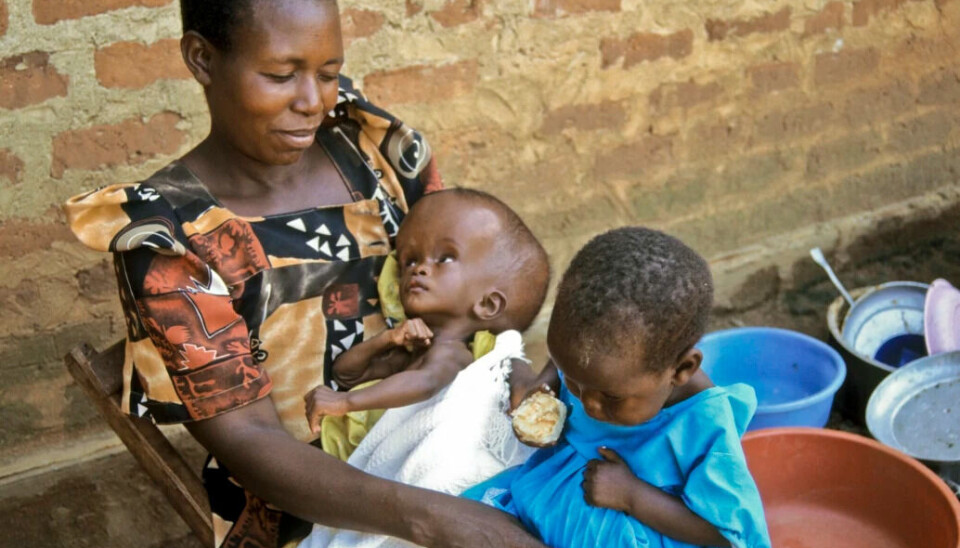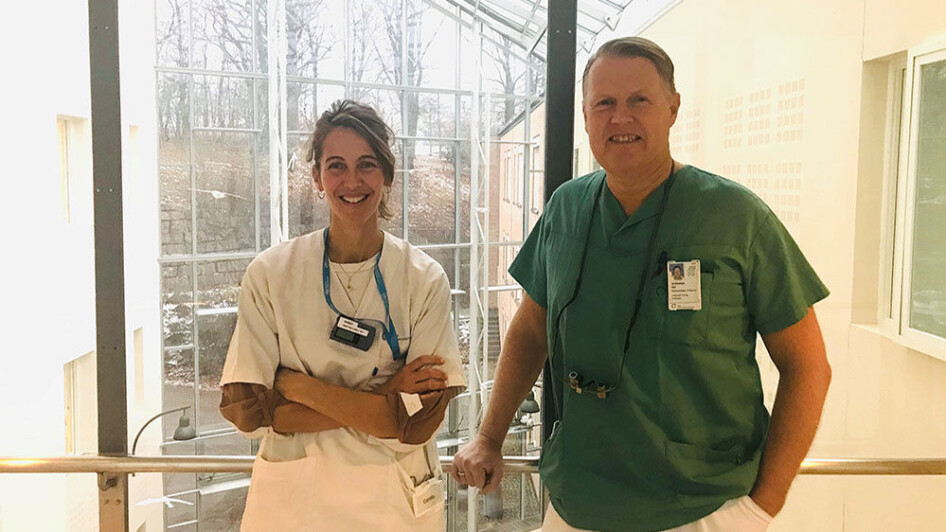THIS ARTICLE/PRESS RELEASE IS PAID FOR AND PRESENTED BY University of Oslo - read more

Infections are the main cause of hydrocephalus in children in Africa
Researchers have mapped the causes of hydrocephalus in children in Africa.
“Hydrocephalus is a disease that affects children, and which we know can lead to serious cognitive issues or death,” Camilla Grøver Aukrust says.
She is a nurse and PhD research fellow at the Department of Community Medicine and Global Health at the University of Oslo.
In a new study, Aukrust and colleagues have mapped the causes of hydrocephalus in children under the age of 18 from Africa. This is important in order to prevent the disease.
They have also investigated which methods are used to give the children a correct diagnosis, such as ultrasound or CT.
“The study is the result of the pandemic. I was supposed to go on fieldwork on March 13, 2020, but that never happened. So I decided to do a systematic review,” Aukrust says.
In a so-called systematic review article, researchers carry out a systematic and broad review of all available scientific literature in a specific field. In this case, about causes of hydrocephalus in children in Africa.

Differences between the West and Africa
“Children with hydrocephalus have too much brain fluid in their heads, causing the heads of the youngest children to grow. This gives the characteristic large heads often associated with the disease,” Aukrust says.
Other symptoms could be that the children become irritable or do not feed properly.
An earlier study has estimated that about 400,000 children in the world are affected by hydrocephalus every year. Around half of these are from Africa, where the disease is considered a public health problem.
“Our study shows that infections are the main cause of hydrocephalus in African children," Aukrust says.
In Norway, the US and other Western countries, however, the most common cause of hydrocephalus is cerebral hemorrhage in premature children.
Non-medical causes
“We also found more cases of post-infectious hydrocephalus in low-income countries, as well as in the countries closest to the equator,” Aukrust says.
This suggests that there are several non-biological and non-medical causes of hydrocephalus that contribute to the uneven distribution of the disease worldwide, which it is important to trace in order to improve treatment offered for the disease.
“This also shows that it can be useful to introduce targeted measures in affected areas, to prevent hydrocephalus,” Aukrust says.
Neurosurgery is the only treatment
Neurosurgery, surgical treatment of diseases or injuries in the nervous system, like the brain, is the only treatment for hydrocephalus today.
“The neurosurgical services offered are limited in large parts of Africa, leading to children receiving late and inadequate treatment,” Aukrust says.
Without treatment, hydrocephalus can lead to neurological damage, such as reduced cognitive function and learning difficulties, epilepsy, vision problems and continence problems. Thic can affect the quality of life or be fatal.
“In theory, hydrocephalus caused by infections can be prevented and treated with antibiotics. That would be great, because neurosurgery and treatment can be demanding and complicated, and lead to lifelong treatment,” Aukrust says.
It is common for the patients having to go through several rounds of surgical treatment.
“It is therefore important to introduce measures to improve the health of both mothers and children to prevent infections during pregnancy or after birth, which in turn can lead to hydrocephalus in children,” Aukrust explains.
Researchers want to find viruses and bacteria that causes hydrocephalus
“Today, researchers are working on finding pathogens, bacteria or viruses, that causes hydrocephalus,” Aukrust says.
Recently, researchers at a hospital in Mbale, Uganda, have found a pathogen which they believe causes hydrocephalus.
Aukrust explains that the cause of the disease in other African countries may be other viruses or bacteria.
“If we don't know what causes hydrocephalus or how the children become infected, it is difficult to prevent,” Aukrust says.
Preventive measures in low-income areas with the highest incidence of hydrocephalus will be able to reduce the incidence of this serious brain disease, as seen in Western countries.
A systematic, interdisciplinary review
“We did a broad literature search, without limitations on time or language, and included 38 studies from 18 African countries with a total of around 6,500 children. Several studies were published in African journals,” Aukrust says.
The researchers ranked the methodological quality of the included studies from low to high quality. The high-quality studies showed a higher incidence of the post-infectious form of hydrocephalus. This may indicate that these studies are better at capturing this form of the disease.
In a large proportion of the studies, the cause of hydrocephalus was not known.
"This shows that we need more and better studies on the topic,” Aukrust concludes.
Reference:
Aukrust et al. Aetiology and diagnostics of paediatric hydrocephalus across Africa: a systematic review and meta-analysis, The Lancet Global Health, vol. 10, 2022. DOI: 10.1016/S2214-109X(22)00430-2

This article/press release is paid for and presented by the University of Oslo
This content is created by the University of Oslo's communication staff, who use this platform to communicate science and share results from research with the public. The University of Oslo is one of more than 80 owners of ScienceNorway.no. Read more here.
See more content from the University of Oslo:
-
Putin’s dream of the perfect family
-
How international standards are transforming the world
-
A researcher has listened to 480 versions of Hitler's favourite music. This is what he found
-
Researcher: "AI weakens our judgement"
-
New, worrying trend among incels, according to researcher
-
Ship’s logs have shaped our understanding of the sea





































